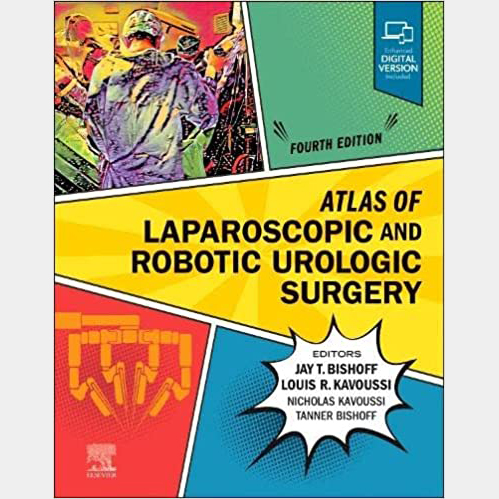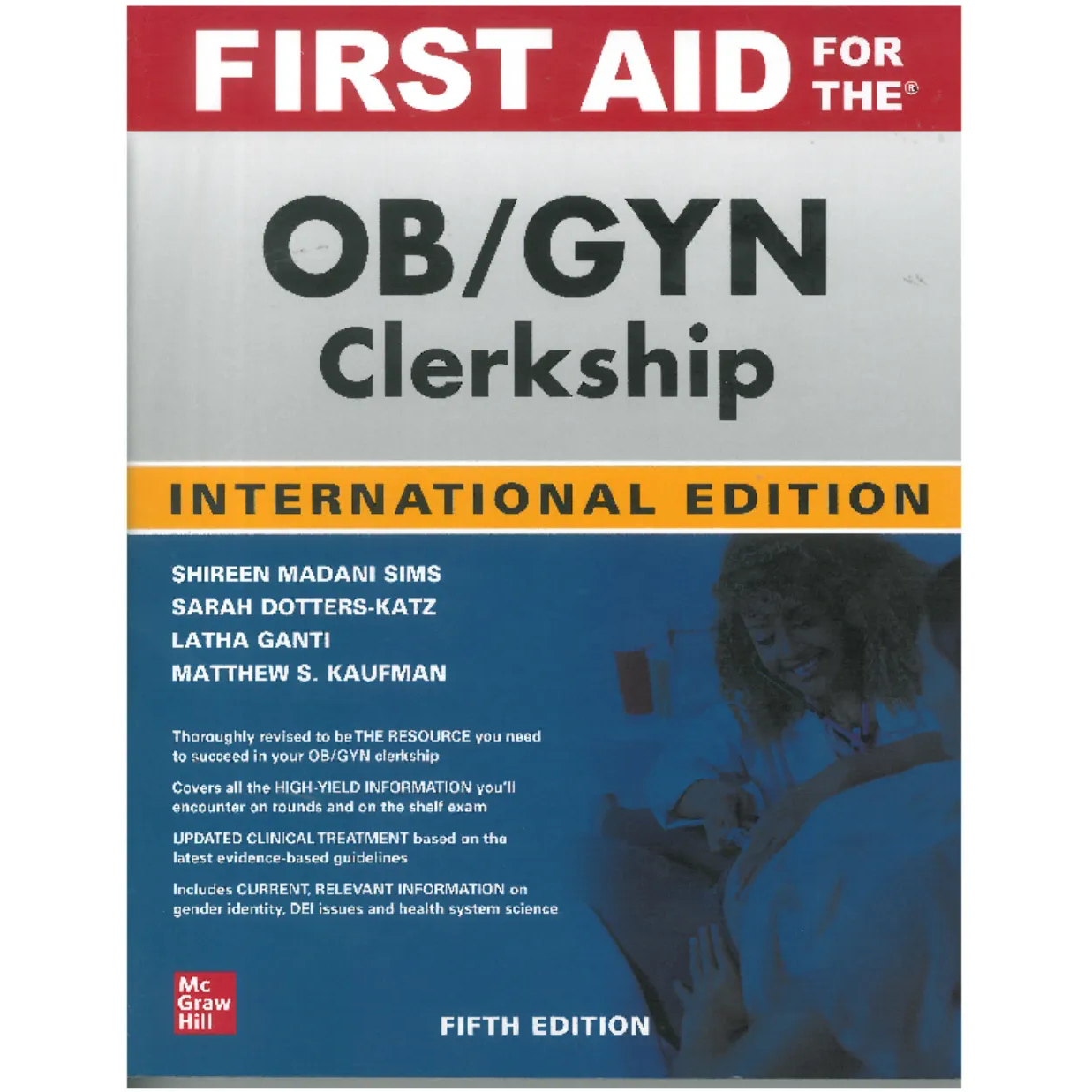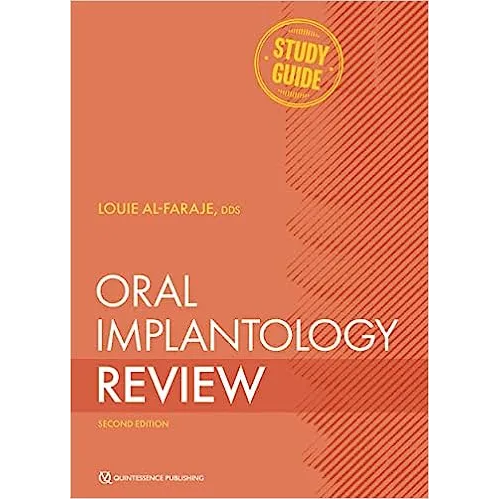紙本+電子書(Enhanced Digital Version Included)
Concise, thorough, and superbly illustrated, Atlas of Laparoscopic and Robotic Urologic Surgery, 4th Edition, is an ideal resource for learning new techniques or briefly reviewing before a case. Written and edited by renowned experts in the field of laparoscopic and robotic surgery, this practical text covers today’s best minimally invasive approaches using the surgical systems, equipment, and robotic devices in use today. More than three hours of video instruction, an increased focus on robotics and new urologic procedures, and step-by-step illustrations help you sharpen your skills in this high-demand area.
Table of Contents
Cover image
Title page
Table of Contents
Copyright
Contributors
Preface
Video Contents
List of Tables
List of Illustrations
Section I. Basic Instrumentation and Techniques
1. Patient preparation and positioning for laparoscopic and robotic urologic surgery
Introduction
Conclusion
2. Laparoscopic/robotic camera and lens systems
Introduction
References
3. Basic instrumentation
Dissectors and graspers
Scissors
Needle drivers and suturing instruments
Vascular clamps
Biopsy forceps
Retractors
Energy instruments
Robotic bipolar devices
Laser instruments
Suction-irrigation devices
Hydrodissector
Extractors
Intracorporeal ultrasound
Reference
4. Stapling and reconstruction
Clips
Linear staplers
Laparoscopic suturing
Adjunct hemostatic agents
References
5. Robotic surgical systems
Introduction
Basic features of RASDs
Brief history of robot-assisted surgery
da Vinci X/Xi surgical system
da Vinci SP
Senhance
Versius
Revo-i
Other RASDs in development
References
6. Considerations for the assistant
7. Anesthetic considerations for laparoscopic and robotic-assisted surgery
Introduction
Physiologic changes
Anesthetic management
Postoperative management
Complications
References
8. Perioperative management: Pain and other considerations for enhanced recovery after surgery (ERAS)
Preoperative
Prophylactic antibiotics
Intraoperative
Postoperative management
Summary
References
9. Insufflators and the pneumoperitoneum
Indications and contraindications
Patient preoperative evaluation and preparation
Operating room setup
Components of the insufflation system
Complications
Conclusion
References
10. Ports and establishing access into the peritoneal cavity
Establishing access to the peritoneal cavity
Laparoscopic trocars
References
11. Retroperitoneal access
Indications and contraindications
Preoperative evaluation and planning
Intraoperative patient positioning
Establishment of pneumoretroperitoneum (see Video 11.1)
Trocar placement
Trocar placement for the robotic-assisted retroperitoneoscopic approach
Single-port surgery
Closure
Postoperative management
Complications
12. Exiting the abdomen and closure techniques
Introduction
Port closure
Methods of port closure
Final survey
Desufflation and port removal
Skin closure
Summary
References
13. Complications of laparoscopic and robotic-assisted surgery
Positioning injury
Insufflation injury
Dissection injury
Thermal injury
Vascular injury
Gastrointestinal injury
Urinary tract injury
Pleural and diaphragmatic injury
Herniation
Robotic-associated injury
Summary
References
Section II. Upper Urinary Tract
14. Laparoscopic and robotic-assisted retroperitoneal lymph node dissection
Introduction
Preoperative preparation
RPLND templates
Positioning of the patient
Port placement
Surgical technique (Video 14.1)
Postoperative management
Complications
Acknowledgment
References
15. Nephrectomy
Introduction
Simple nephrectomy (Video 15-1)
Radical nephrectomy (Videos 15.2 and 15.3)
Transperitoneal nephrectomy
Hand-assisted approaches
Retroperitoneoscopic approaches
Postoperative management
Complications
Summary
References
Suggested readings
16. Nephroureterectomy
Indications and contraindications
Patient preoperative evaluation and preparation
Operating room configuration and patient positioning
Trocar placement
Procedure (see Video 16.1)
Postoperative management
Complications
Acknowledgments
Suggested readings
17. Partial nephrectomy
Introduction
Indications and contraindications
Transperitoneal partial nephrectomy
Retroperitoneal approach
Postoperative care
Complications
Summary
References
Suggested readings
18. Laparoscopic live donor nephrectomy
Indications and contraindications
Patient preoperative evaluation and preparation
Operating room configuration and patient positioning
Trocar placement
Transperitoneal left laparoscopic donor nephrectomy (Videos 18.1, 18.2, and 18.3 for hypothermic technique)
Transperitoneal right laparoscopic donor nephrectomy
Retroperitoneal laparoscopic donor nephrectomy
Hand-assisted laparoscopic donor nephrectomy
Postoperative management
Complications
19. Laparoscopic renal cyst decortication
Indications and contraindications
Patient preoperative evaluation and preparation
Operating room configuration and patient positioning
Trocar placement
Procedure (Video 19.1)
Postoperative management
Complications
20. Renal biopsy
Indications and contraindications
Patient preoperative evaluation and preparation
Operating room configuration and patient positioning
Trocar placement
Procedure (see Video 20.1)
Postoperative management
Complications
Summary
Suggested readings
21. Delivery of renal ablative technology
Introduction
Indications and contraindications
Preoperative evaluation and preparation
Operating room configuration and patient positioning
Trocar placement
Procedure
Postoperative management
Complications and perioperative outcomes
Renal cryoablation: Oncological outcomes
Summary
References
22. Robotic adrenalectomy
Anatomy
Indications and contraindications
Preoperative considerations
Patient positioning and port strategy
Surgical steps
Postoperative management
Complications
23. Laparoscopic and robot-assisted pyeloplasty
Introduction
Transperitoneal approach
Complications
References
24. Ureterolysis
Introduction
Indications and contraindications
Preoperative evaluation and preparation
Operating room configuration and patient positioning
Trocar placement
Procedure (Video 24.1)
Postoperative management
Complications
References
25. Laparoscopic and robotic-assisted ureteral reimplantation
Indications and contraindications
Preoperative evaluation and preparation
Operating room configuration and patient positioning
Trocar placement
Procedure (see Videos 25.1 and 25.2)
Postoperative management
Complications
26. Laparoscopic and robotic boari flap ureteral reimplantation
Indications and contraindications
Patient preoperative evaluation and preparation
Operating room configuration and patient positioning
Trocar placement
Operative procedure (Video 26.1)
Regional lymphadenectomy
Single-port reconstructive surgery
Single-port placement
Postoperative management
Complications
References
Suggested readings
27. Laparoscopic appendiceal onlay flap and bowel reconfiguration for complex ureteral stricture reconstruction
Introduction
Indications and contraindications
Patient preoperative evaluation and preparation
Operating room configuration and patient positioning for the appendiceal onlay procedure
Ureteral stent placement
Trocar placement
Procedure (see Video 27.1 for buccal onlay and Video 27-2 for appendiceal onlay)
Postoperative management
Complications
References
28. Pyelolithotomy, ureterolithotomy, and anatrophic nephrolithotomy
Indications
Patient preoperative evaluation and preparation
Trocar placement
Section III. Lower Urinary Tract
29. Laparoscopic and robotic-assisted laparoscopic pelvic lymph node dissection
Indications and contraindications
Patient preoperative evaluation and preparation
Operating room configuration and patient positioning
Trocar placement
Procedure (Video 29.1)
Postoperative management
Complications
Summary
30. Simple prostatectomy
Introduction
Indications and contraindications
Patient preoperative evaluation and preparation
Operating room configuration and patient positioning
Trocar placement
Procedures (Video 30.1)
Postoperative management
Complications
Results
Summary
References
31. Transperitoneal radical prostatectomy
Indications and contraindications
Patient preoperative evaluation and preparation
Operating room configuration and patient positioning
Trocar placement
Procedure (Video 31.1)
Postoperative management
Complications
Acknowledgements
32. Perineal robotic radical prostatectomy and pelvic lymph node dissection
Introduction
References
33. Extraperitoneal robotic-assisted radical prostatectomy
Introduction
Extraperitoneal RARP (see Video 33.1)
Special circumstances: Favorable indications
Special circumstances: Limitations and relative contraindications
Pros and cons of the extraperitoneal technique
Conclusion
References
34. Robotic-assisted radical cystectomy
Indications and contraindications
Patient preoperative evaluation and preparation
Operating room configuration and patient positioning
Trocar placement
Procedure (Video 34.1)
Postoperative management
Complications
References
35. Laparoscopic and robotic urinary diversion
Introduction
References
36. Robotic-assisted laparoscopic partial cystectomy and bladder diverticulectomy
Introduction
Indications and contraindications
Patient preoperative evaluation and preparation
Operating room configuration and patient positioning
Trocar placement
Partial cystectomy procedure (Video 36.1)
Bladder diverticulectomy procedure (Video 36.2)
Postoperative management
Complications
37. Robotic-assisted laparoscopic continent catheterizable channels and augmentation enterocystoplasty
Introduction
Indications and contraindications
Patient preoperative evaluation and preparation
Operating room configuration and positioning
Trocar placement
Procedure: Augmentation ileocystoplasty and mitrofanoff appendicovesicostomy (Video 37.1)
Procedure: Double Yang-Monti (modified technique)
Postoperative management
Complications
References
38. Sacrocolpopexy
Introduction
Indications and contraindications
Patient preoperative evaluation and preparation
Operating room configuration and patient positioning
Trocar placement
Procedure
Postoperative management
Complications
Section IV. Genitalia
39. Laparoscopic orchiopexy
Indications and contraindications
Patient preoperative evaluation and preparation
Operating room configuration and patient positioning
Trocar placement
Procedure (Video 39.1)
Postoperative management
Surgical results
Complications
40. Laparoscopic orchiectomy
Indications and contraindications
Patient preoperative evaluation and preparation
Operating room configuration and patient positioning
Trocar placement
Procedure
Postoperative management
Complications
41. Surgery of the spermatic cord
Surgical anatomy of the spermatic cord
Laparoscopic varicocelectomy
Laparoscopic denervation for chronic testicular pain
42. Robotic applications for infertility surgeries
Introduction
Anatomy
Preoperative assessment
Anesthesia
Patient/robot positioning and settings
Robotic-assisted microsurgical vasectomy reversal
Robotic-assisted microsurgical vasovasostomy
Robotic-assisted microsurgical vasoepididymostomy
Robotic-assisted microsurgical varicocele repair
Conclusion
References
43. Endoscopic subcutaneous modified inguinal lymph node dissection for squamous cell carcinoma of the penis
Indications and contraindications
Patient preoperative evaluation and preparation
Operating room configuration and patient positioning
Trocar placement
Procedure (Video 43.1)
Postoperative management
Complications





